Astana went into this match already knowing they would not advance to the next stages of the competition, having not being able to register a single point in the previous four matches in the group. Manager Roman Hryhorchuk was adamant though, that his side would take the match against Manchester United seriously, even if they have subsequently already been eliminated from the competition. That being said, because their league season has subsequently finished (Astana won the league for the sixth year in the row, beating title rivals Kairat by one point), Hryhorchuk put out a notably weaker squad, with a mix of experienced players and young stars. After their final match in the Europa League against FK Partizan in December, their season will be over by March.
On the other hand, Ole Gunner Solskjær opted to take a very young squad to Nur-Sultan to take on Astana in the matchday five of the UEFA Europa League. It was clear that he felt that the 6000-kilometre trip was not worth risking members of the senior squad. Manchester United are in a race to finish in the top four in the Premier League, and after the match against Aston Villa this coming weekend, a match that will be quite tough in its own right, they are scheduled to play against Tottenham, with former coach José Mourinho at the helm, and then an away trip to the Etihad Stadium against current Champions, Manchester City. With a tough schedule coming up, Solskjær opted to instead leave most of his senior squad back in Manchester.
This tactical analysis will look at the tactics that both teams deployed, and use analysis to figure out how Astana managed to come from behind in a 2-1 victory.
Lineups
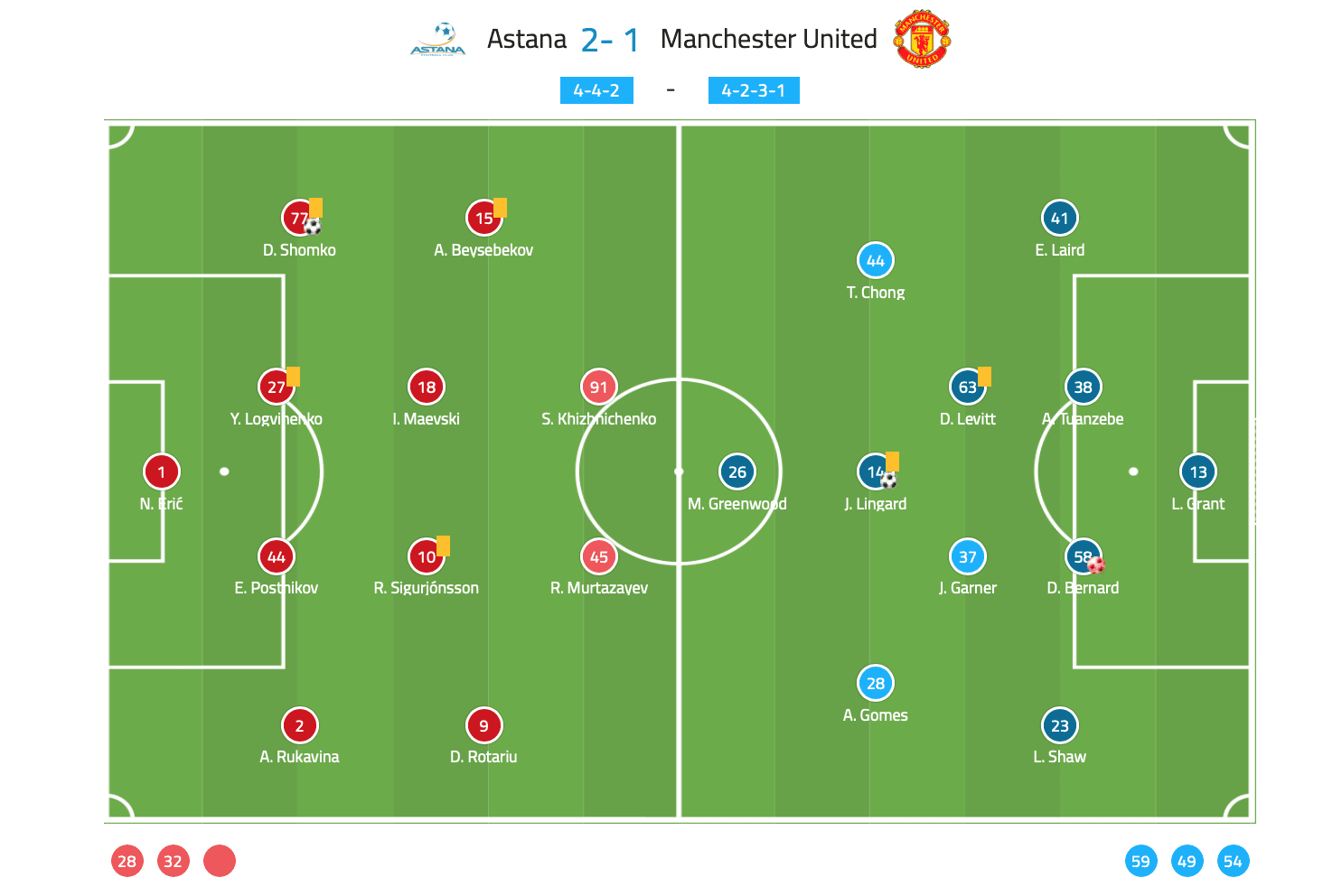
Hryhorchuk made the choice to line his side up in a 4-4-2 formation. While Astana have only used this shape in 8% of their matches this past season, it was to be expected that they would line-up this way. Astana usually line up in either a 4-2-3-1, or a 4-1-4-1, because as league powerhouses, they are almost always the favourites for every single match they play in, both home and away. Most teams like to sit back against them, and Astana dominate possession and play attacking football on the front foot.
The 8% of the time Hryhorchuk had his team line up in a 4-4-2 were against stronger opposition. Hryhorchuk has only used it in the Europa League matches, the Champions League qualification matches, and in the league against some of the other top teams, specifically when Astana are trying to maintain a lead, and see a match out. The 4-4-2 gives them the extra defensive protection, with two banks of four, while simultaneously having two strikers up top to combine in attack. This differs from the 4-5-1, another formation that Hryhorchuk tried out in more difficult matches. While the 4-5-1 gave them the extra man in defence, which was especially useful to track runners, having a lone striker upfront made it really difficult to counter-attack effectively. Having the second striker for support really helps ease the pressure off one single player to carry the attack of the team.
Solskjær went back to his 4-2-3-1 after tinkering with the 3-4-3 in the Premier League against Sheffield United, with disastrous results. Manchester United were favourites for the match on paper, but it was complete dominance from Sheffield United, that Solskjær was forced to revert back to his 4-2-3-1 after half-time. This formation, which is Solskjær’s preferred formation, sees United really dominate the flank areas, with four players staying wide in attack (two wingers, and two fullbacks). Furthermore, the player in the number 10 role, and the striker are often given freedom to switch amongst themselves and play in between the lines, making it difficult to defend against.
Manchester United start strong
The first half was almost a complete dominance from the away team. It was clear that what worked well in the second half of the Sheffield United game was further emphasised and worked on in training.
Astana really struggled with Manchester United’s use of space between the lines. More often than not, man-marking the United player would either leave them to receive the ball freely or follow their man, effectively creating a gap behind them that another Manchester United player could run into. Essentially there was little communication between the Astana players; none of them seemed to be on the same page in terms of how to defend against Manchester United.

Astana’s defensive structure falls apart because of Manchester United’s simple use of the space in between the lines. Chong drops in a bit deep to receive the ball, Shomko runs to follow him out, attempting to track him. This leaves a huge gap that Laird is able to exploit. Beisebekov attempts to follow him, but his run is mistimed, and Larid receives the ball. Logvinenko should have come out to the left to cover for Shomko.
In the first half, Astana were quite sloppy in possession, leading to many ‘free’ chances given to Manchester United. Furthermore, when they went about losing possession, there was no sense of urgency to get back quickly, especially compared to the Manchester United players who looked to get to the other end of the pitch as quickly as possible. Had Manchester United been more clinical on the night, Astana would have been losing by much more than one goal at half time.
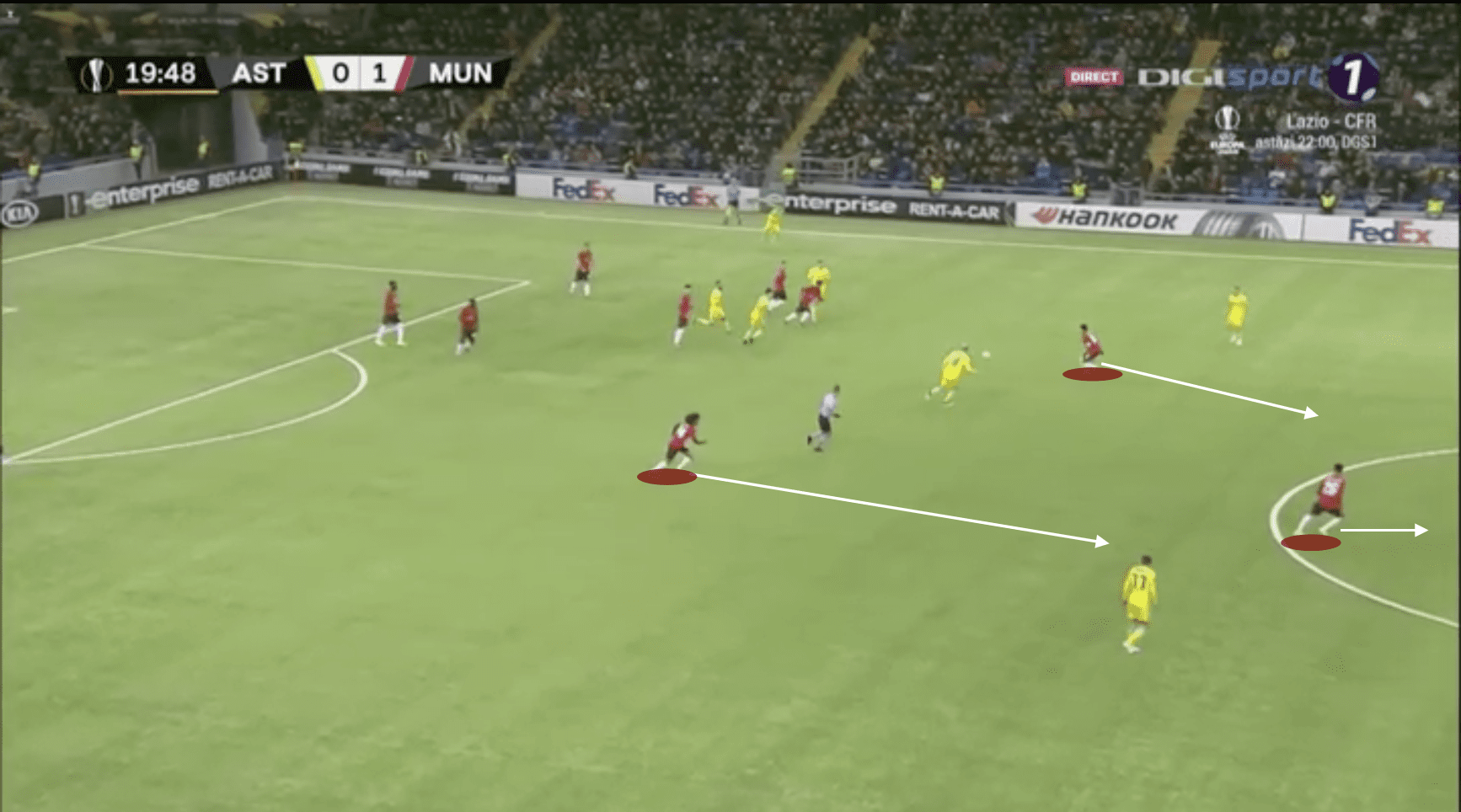
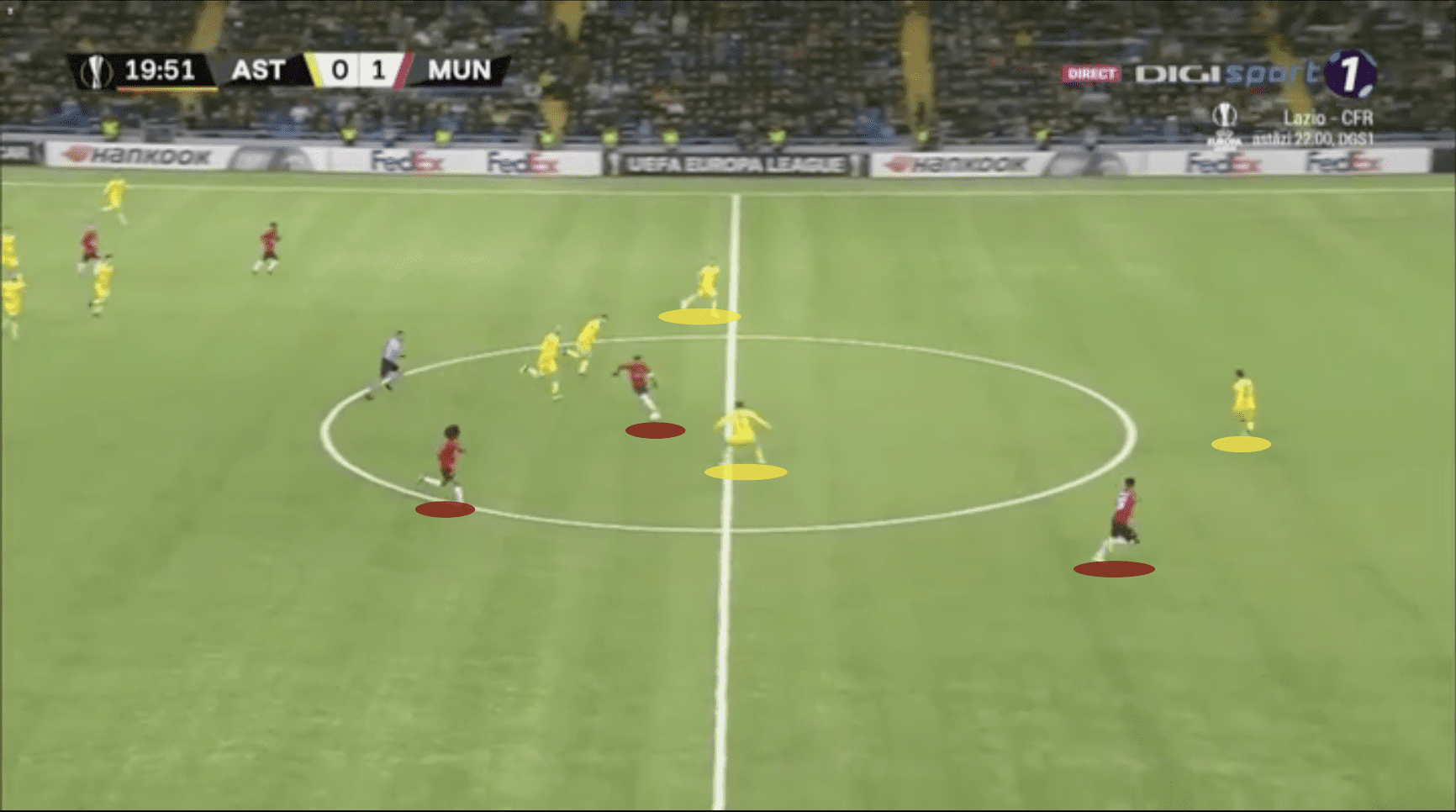
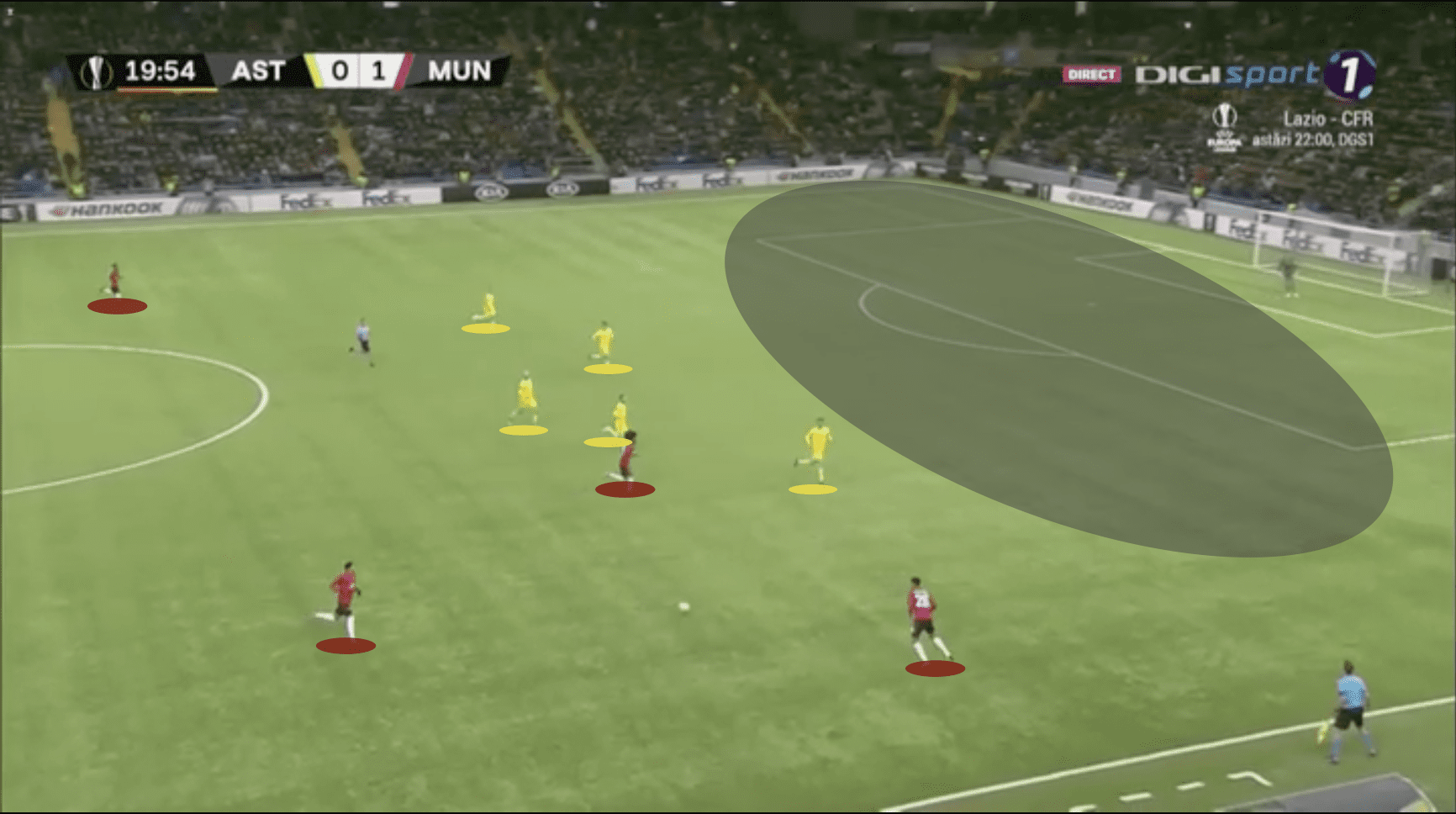
Astana’s second-half heroics
A half-time team talk clearly did Astana well, as they played with much more purpose and desire in the second part of the clash. It was clear that Hryhorchuk managed to convince his players that Manchester United were there for the taking.
While Astana still remained in their 4-4-2 shape, they was much more dynamism. They sat deeper in the first half, absorbing the pressure, and as mentioned above, they struggled with Manchester United’s attacking play style. In the second half, they combatted this by being more attacking minded themselves. The 4-4-2 shape did not remain as static as it did in the first half; when Astana were on the attack, runners from midfield would join the strikers in trying to pin Manchester United back.
At times, Astana looked like they were in a 4-3-1-2, with just one of the midfielders occupying a gap a bit further forward.
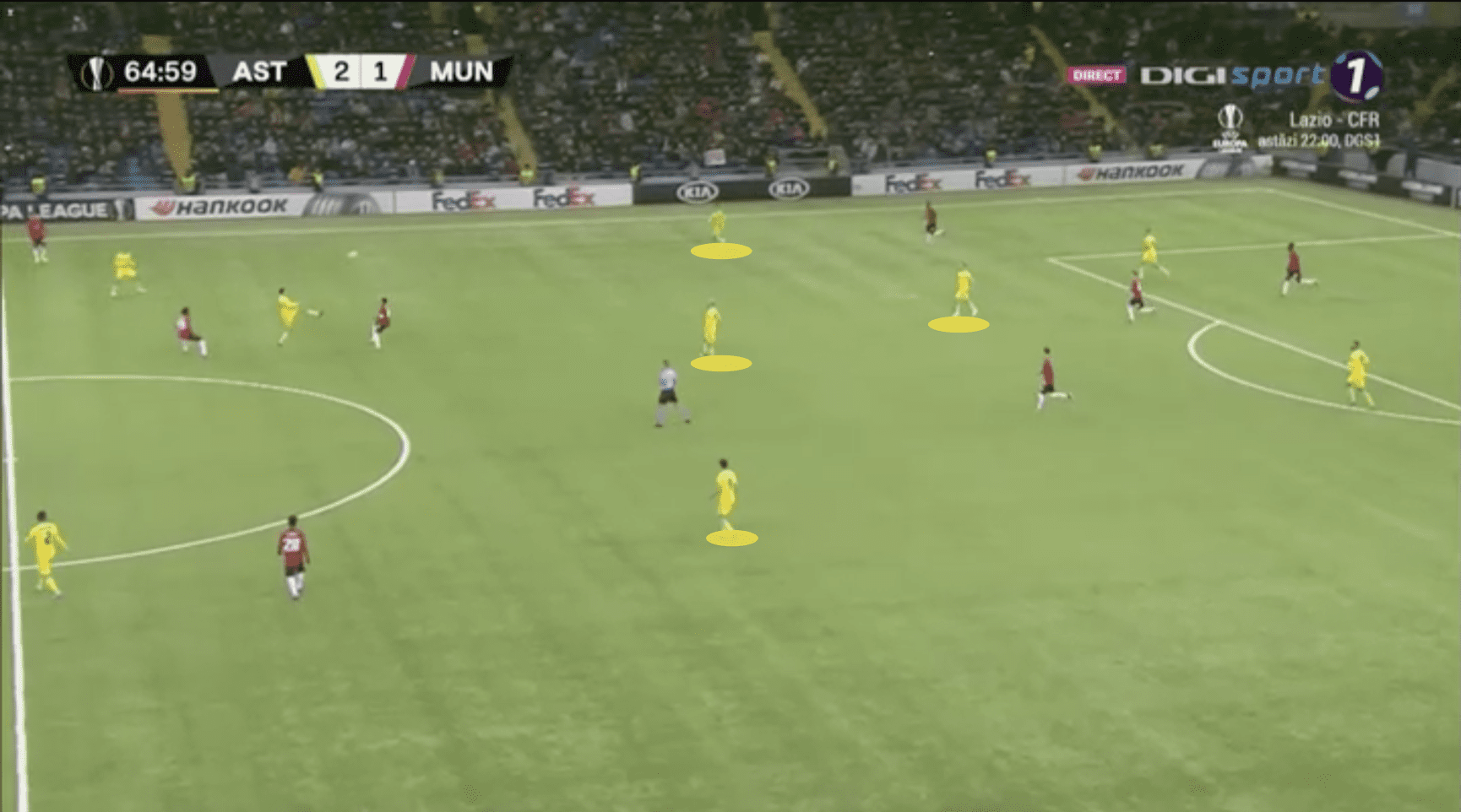
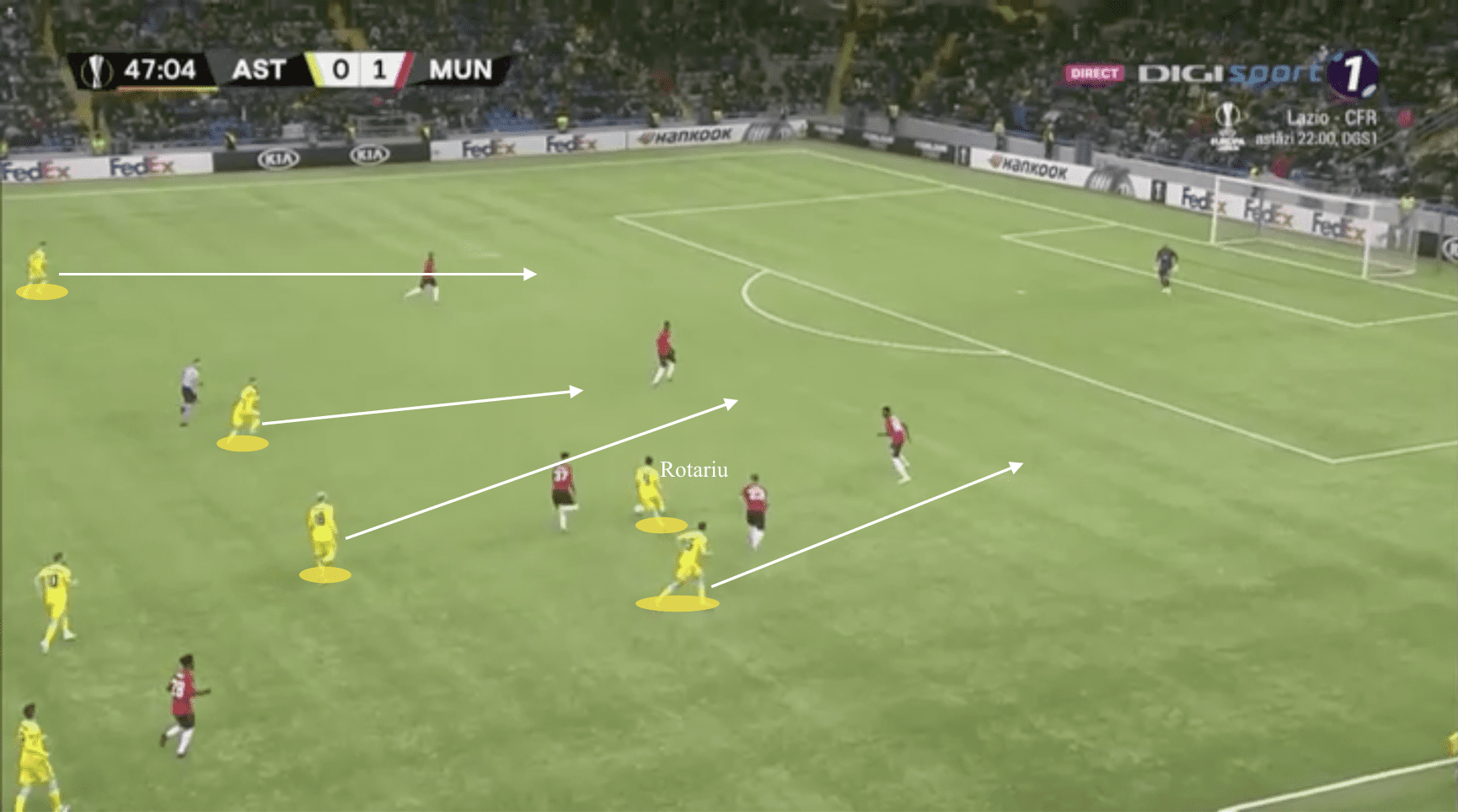
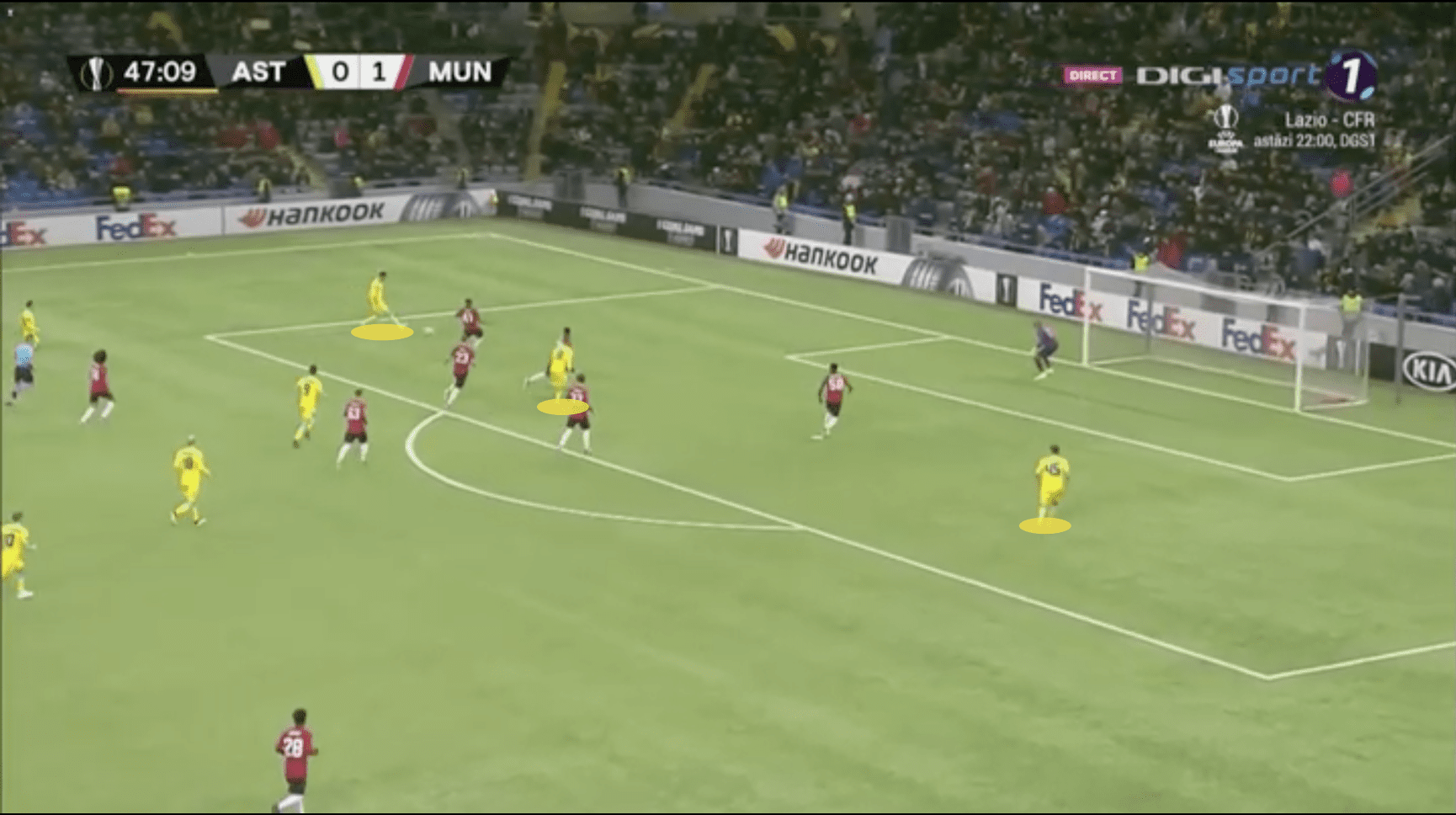
Astana were able to score the equalizer by being more dynamic like this. The winner came from a bit of luck as it was an own goal, but they held on to their 2-1 lead well, defending aggressively against a tired and desperate Manchester United side. Goalkeeper Erić also held his ground while his team was ahead. He faced five shots on the night, saving four of them to help his team grab the three points.
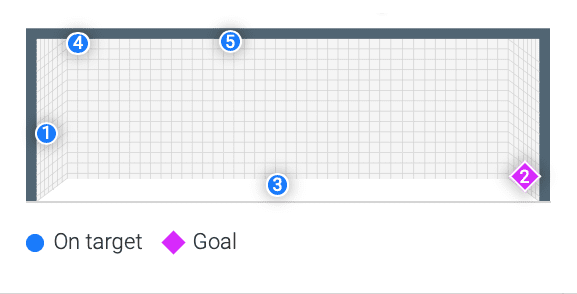
Conclusion
The home side and their fans will be delighted with the result, despite it not meaning anything significant for the future. They’ve won the league by one point, won the Super Cup, and managed to beat Manchester United in a European fixture, after coming from behind to get the three points. With one more match until the end of the season, the last Europa League match, Astana can confidently say that their season was a success that ended on a high note.
This loss may not be a massive deal to Manchester United, compared to some of their other losses this season, especially because since the club have already qualified to compete in the next round. That being said, a win would have guaranteed them top spot, and therefore, an easier opponent in the next round. Now, the next match against AZ Alkmaar decides who tops the group, and at the minute, Solskjær and his team need all the ‘easy’ games they could get. A Europa League win may be the only way they qualify for the Champions League next season; something they need if they want to attract big stars to Old Trafford rather than their rivals.

If you love tactical analysis, then you’ll love the digital magazines from totalfootballanalysis.com – a guaranteed 100+ pages of pure tactical analysis covering topics from the Premier League, Serie A, La Liga, Bundesliga and many, many more. Buy your copy of the November issue for just ₤4.99 here

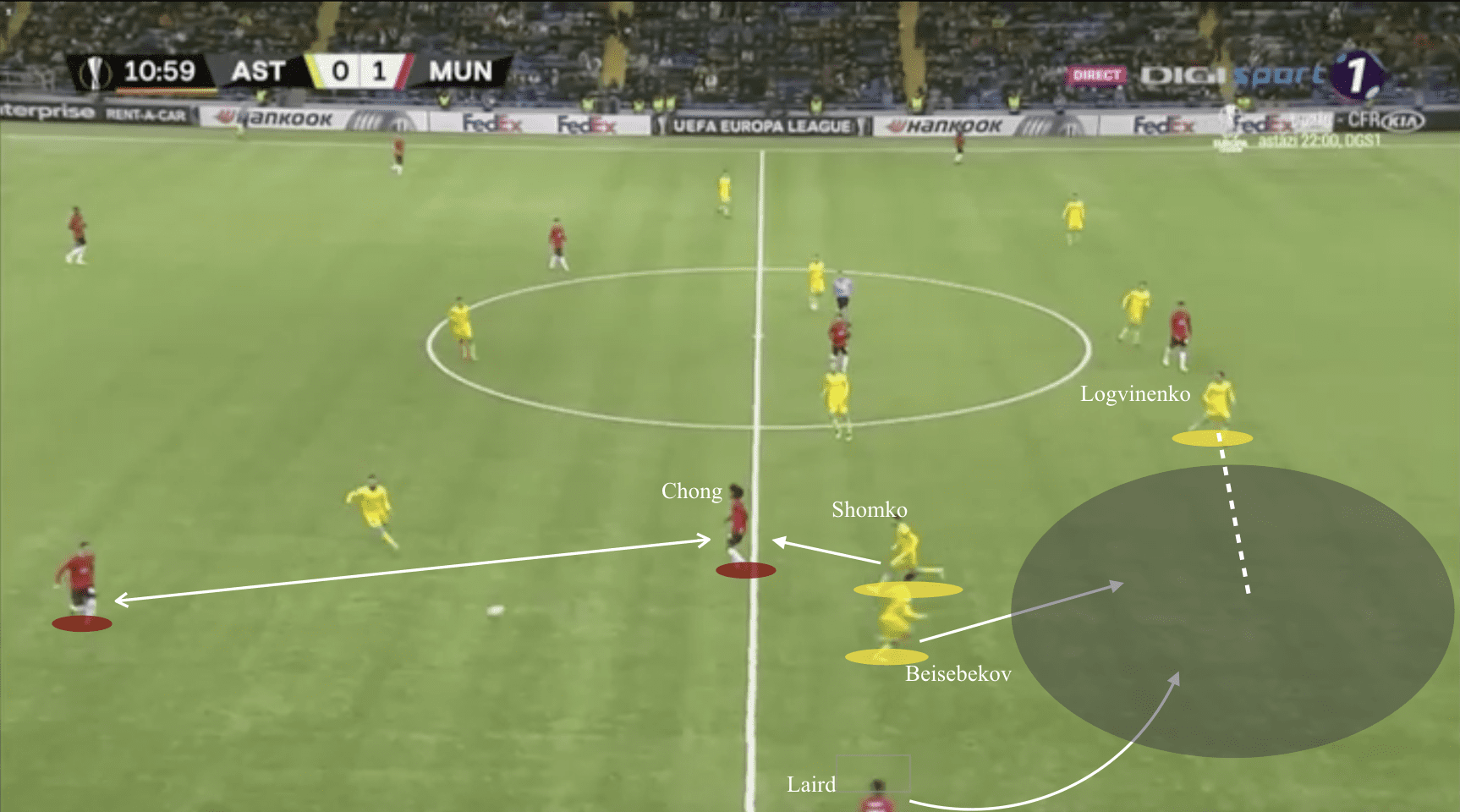



Comments